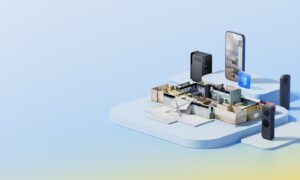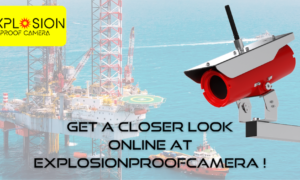How To Choose the best welding camera? Welding cameras have traditionally been used to aid in the automated or machine welding of inaccessible joints and to verify the strength of critical welds.
Cameras are also useful tools for many other welding apps, thanks to recent advances in electronics that have improved image quality and reduced the cost of such equipment.
The best welding camera is especially beneficial for enhancing working conditions, set-up speed, weld quality, positioning accuracy, and quality assurance.
Welding Camera Functional Considerations
Once investing in welding cameras, there are several practical issues to consider to find the best welding camera. The application determines many of these system features.
Mechanism of imaging
The operator must place the heat source and wire before, all through, and after welding in applications where the camera is used for remote control and monitoring.
As a result, the camera must be capable of producing a meaningful image in both high and low light levels. This functionality is achieved through a variety of methods, including high-speed shutters, filter changes, and motorized irises.
Lenses
Motorized lenses sometimes are useful for remote welding apps because they simplify camera setup by making focus adjustment easier. Motorized lenses, on the other hand, generally add weight, cost, and size to the system.
Fixed focal length lenses are smaller and less costly and they are frequently the best choice because the camera is usually mounted in a fixed position.
Frame-rate
Welding cameras for tracking are typical of PAL/NTSC resolution and frame rate. This rate of recording the camera output serves as a useful tool for operator training, root-cause analysis, and quality assurance.
The image of the weld seam as well as the melt pool can be used for feedback control at faster frame rates and better resolutions, and the recorded images are very useful for process research and development.
Lighting
When using the camera to assist with the installation, the system may benefit from using a halogen or LED light source to minimize the impact of changing lighting conditions.
The light source is frequently placed next to the camera. To significantly improve image quality, pulsed laser, and xenon strobe illumination can be used.
However, such equipment raises system costs and may necessitate the use of appropriate safety and health measures.
The image of the weld seam as well as the melt pool can be used for feedback control at faster frame rates and better resolutions, and the recorded images are very useful for process research and development.
The length of the cable
A camera has five common signal outputs: analog, Firewire, GigE, CameraLink, and USB. Because the latter three techniques have limited cable lengths, they are less suitable for remote camera systems.
Control, Display, and/or Record
Analog systems can be linked to computers via frame grabbers, or the video image can be off at low-cost LCD monitors.
By using a suitable transformer, the analog camera outputs for multi-camera systems can be easily displayed on a single monitor.
3 recommendations for the best welding camera
Here is the three on the list of welding camera with best camera lens we would like to share to you!
MELTVIEW PIXI
The MeltView PIXI is the world’s smallest ruggedized welding camera. No other small camera can produce such a stunning high-resolution welding video. The PIXI system provides exceptional value thanks to a plethora of advanced capabilities and simple operations. The MeltView PIXI is used at working distances as short as 2′′ and temperatures as high as 250°C.
- 30mm integrated cooling, lighting, and angled optics
- 1920x1080p clear, high-resolution image
- Display without a computer and without lag
- Having switched between welding as well as non-welding modes is automatic.
- Transmission over long distances and wirelessly
- Camera parameters, control of LEDs, and crosshairs via a single button
- Longevity and durability have been demonstrated.
MELTVIEW DART
The MeltView DART welding camera is a reliable industrial weld monitoring solution known for its image quality, ease of use, and low cost. The MeltView DART is used to monitor arc welding apps at working distances ranging from 4′′ to 20′′ (100-500 mm) and temperatures ranging from 100°C to 250°C.
- Image of high-quality
- Shifting between arc-off and arc-on modes is automatic.
- There is no computer or software required because the camera displays straightforwardly to the monitor.
- Integrated security and lighting
- Size is small.
- Dependability that has been demonstrated
- A wide range of lenses, monitors, and cabling options are available.
MELTVIEW PACT
The MeltView PACT is a streamlined welding camera that offers a magnified view for manual welding monitoring and on-site training. The PACT can also be used to identify sequencing as well as positioning errors in robotic welding cells. The real-time image allows for faster robot program development while also improving customer and trainee comprehension.
- The size is small.
- Flexible lightweight mount
- Lighting that is built in
- Having switched between arc-off and arc-on modes is automatic.
- Working distances are short.
- The camera outputs directly to the monitor.
- Recording accessories
MELTVIEW SYNC
The SYNC is a one-of-a-kind high-speed welding camera that overrides two major high-speed imaging challenges: camera bulk but also limited on-board recording space. The SYNC can be hung to a welding machine robot but also record consistently to a computer at up to 1200 frames each second, making it ideal for troubleshooting and R&D.
- Images with high resolution and no blur
- Frame rates of up to 1200 frames each second are possible.
- Continuous recording at high speed
- Appropriate for robotic welding and difficult-to-access processes
- Richly featured software interface with provoked recording
- Lens selection and positioning flexibility
- Portable turnkey system quick setup/package
The bottom line
The best welding camera is really useful for many things. Once investing in welding cameras, do not forget to consider some things to find the best welding camera. Hope that this article is really helpful to you.



































